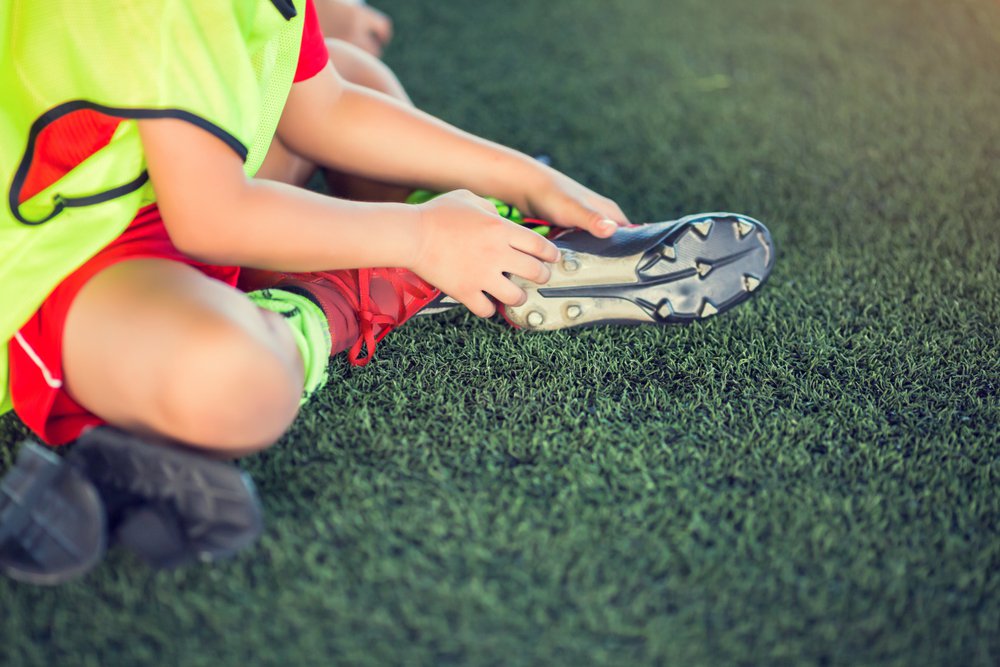 Kids and teens tend to have flexible bodies that heal quickly from injuries, leading many young people to feel invincible. But when it comes to foot and ankle injuries, even minor ones need to be taken seriously. Foot pain and ankle pain, especially severe pain or pain that is recurring or chronic, can be signs of a serious problem under the surface.
Kids and teens tend to have flexible bodies that heal quickly from injuries, leading many young people to feel invincible. But when it comes to foot and ankle injuries, even minor ones need to be taken seriously. Foot pain and ankle pain, especially severe pain or pain that is recurring or chronic, can be signs of a serious problem under the surface.
Being aware of the most common foot and ankle injuries in young people can help parents recognize when it's time to seek medical treatment. This is true of all children and teens, but especially athletes, who face an increased risk of injury due to the activities they participate in.
The team at Greater Pittsburgh Orthopaedic Associates (GPOA) is experienced in treating a wide range of foot and ankle injuries in young people, from sprains to fractures. We'll work with you and your child to help them recover quickly and safely, allowing them to return to the activities they love with confidence.
Here's some more information on foot and ankle injuries in children and teens, as well as treatments available from GPOA:
Why Do Kids Get Foot or Ankle Injuries?
Kids can be more prone to foot and ankle injuries than adults because of their still-developing musculoskeletal system. Young people's bones, muscles, joints, and other tissue elements are all in the process of maturing and strengthening; this often makes them more vulnerable to injury due to overuse or trauma.
Sports are also a major risk factor for foot and ankle injuries in kids. Many youth sports involve sudden starts, stops, and changes in direction that can put extra strain on young bodies -- especially those not yet used to the physical demands of regular exercise or who are still learning the appropriate techniques to prevent injury in their sport.
Top Six Foot and Ankle Injuries in Kids & Teens
Ankle Sprains
An ankle sprain is caused when the ligaments that support the ankle are overstretched or torn. It can be painful and can take several weeks to heal.
Foot and Ankle Fractures
Fractures of the bones in the foot and ankles range from minor stress fractures to more serious ones like those caused by a car accident. Treatment for a broken ankle or foot depends on the type and severity of the fracture and may involve wearing a cast or crutches for several weeks.
Plantar Fasciitis
Plantar fasciitis is an inflammation of the plantar fascia, which is a band of connective tissue that runs along the bottom of the foot from heel to toe. The most common symptom is pain in the heel, which may be accompanied by swelling and stiffness.
Achilles Tendinitis
This condition occurs when the Achilles tendon becomes inflamed due to overuse or overstretching. Symptoms include pain, tenderness, and swelling in the heel area and difficulty flexing or extending your feet fully with each step taken.
Sever's Disease
This condition occurs when there is inflammation of the growth plate at the back of a child’s heel bone (calcaneus). It usually affects kids aged 8–14 and can cause pain during activities such as running and jumping as well as general tenderness in either foot near where it meets up with their leg bones (tibia & fibula).
Ankle Instability
A weakened ankle joint can often be unstable leading to frequent sprains, falls, and other accidents, so it’s important to have things checked out if your child experiences recurrent problems with their feet or ankles.
When Should My Child Seek Treatment?
It’s important for children and teens to be aware of when to seek treatment for foot or ankle pain. There are a few signs that could indicate something more serious is going on, such as:
- Experiencing pain when applying pressure
- Limited mobility in the joint
- Swelling around the joint
- Heat or redness in the area
- A chronic ache that worsens over time
If any of these symptoms are present, it’s important to have a doctor examine the injury.
In some cases, certain conditions can worsen if left untreated. For example, ankle sprains can progress into more devastating injuries such as tears of ligaments if they do not receive medical attention. Sever's Disease and plantar fascia also become worse with time if ignored.
How We Treat Pediatric Foot & Ankle Injury
At Greater Pittsburgh Orthopaedic Associates (GPOA), we use a comprehensive approach to diagnose and treat pediatric foot and ankle injuries. In most cases, non-surgical treatments like immobilization (splinting/casting), physical therapy, and rest are used to relieve pain.
In more severe cases, however, surgery may be necessary. Our experienced surgeons perform minimally-invasive procedures to minimize pain and scarring. Our foot and ankle surgeons also use the latest technology such as arthroscopic techniques for improved accuracy in diagnosis and treatment.
Visit the Top Foot Injury Specialist Near You
Foot and ankle injuries can be painful and limiting, but with the right treatment, your child can get back to the activities they love quickly and safely.
At Greater Pittsburgh Orthopaedic Associates (GPOA), we understand how important it is for your child to stay active. Our team of experienced and certified orthopedic specialists will diagnose the condition and recommend the most appropriate treatment plan to get them back in action faster.
If you suspect your child has a foot or ankle injury, schedule an appointment online today with the top foot and ankle specialist Pittsburgh, PA has to offer.
